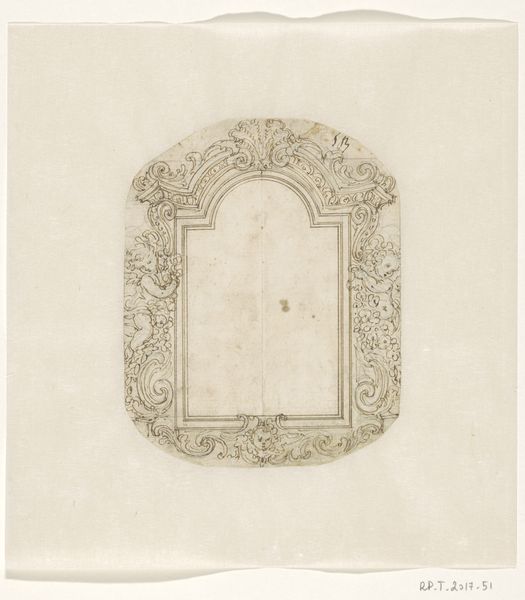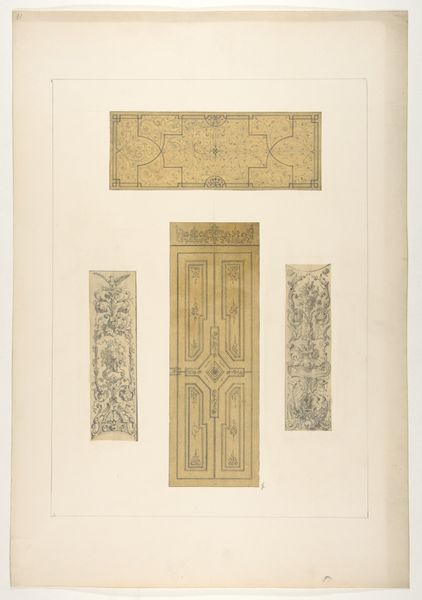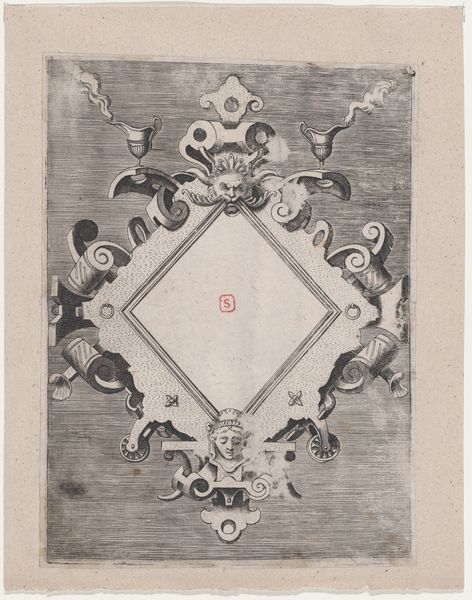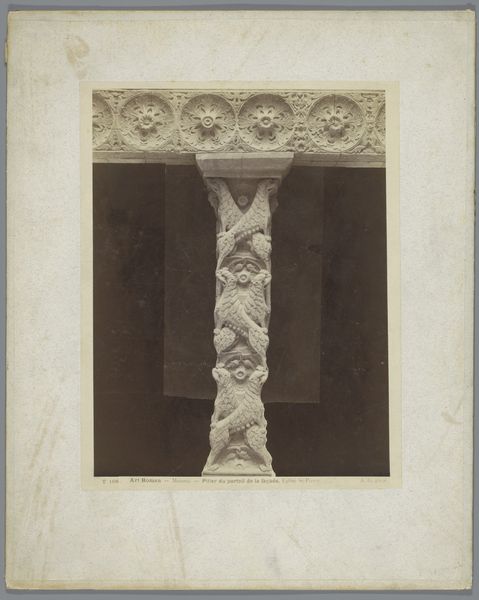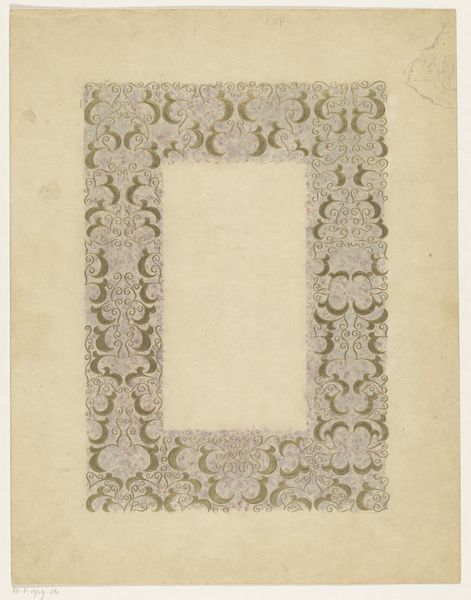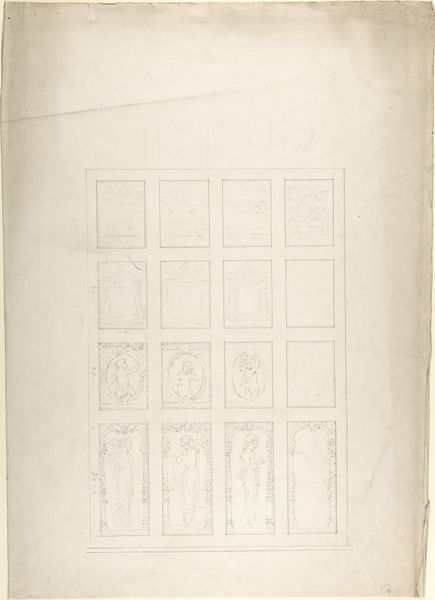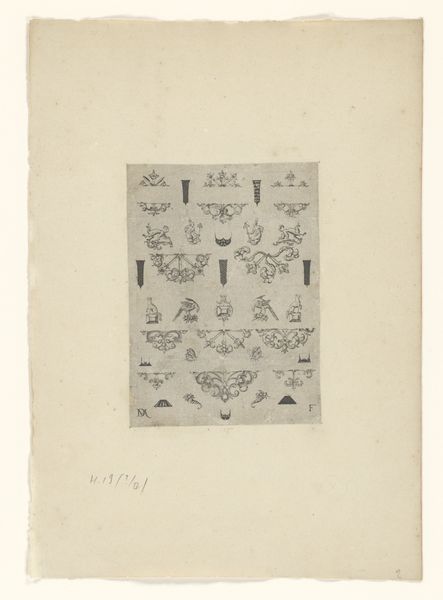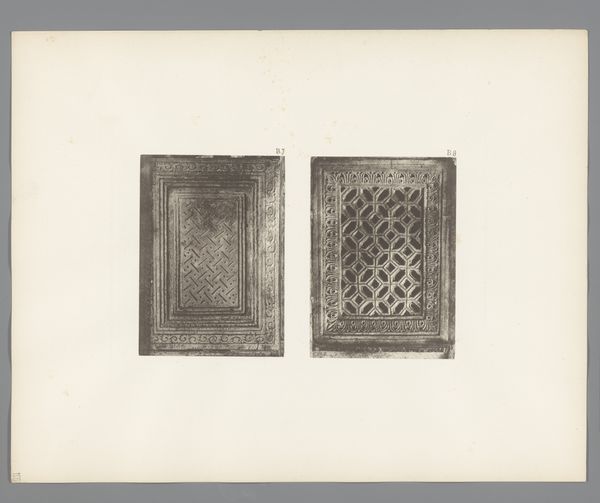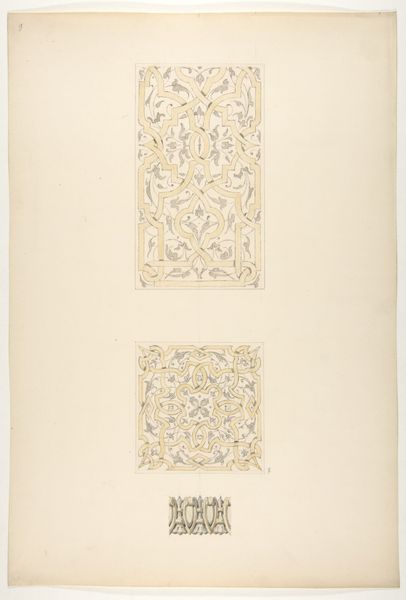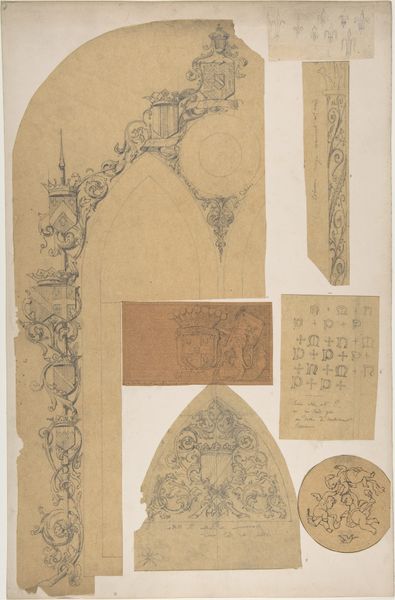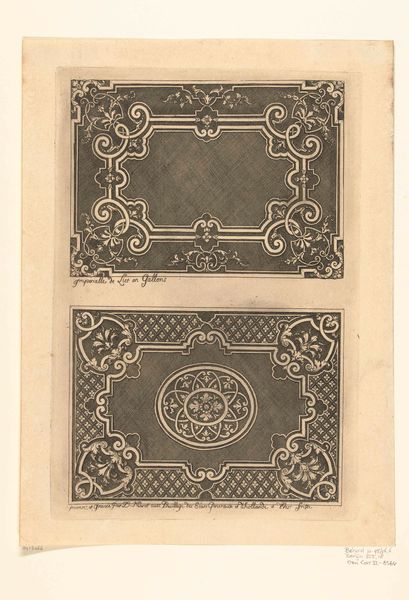
Compositie van gipsen ornamenten uit het atelier van J. Delbove, Brussel, België 1860 - 1882
0:00
0:00
Dimensions: height 233 mm, width 190 mm
Copyright: Rijks Museum: Open Domain
Curator: What strikes me most about this mixed-media collotype from between 1860 and 1882, by Charles De Trez, titled "Compositie van gipsen ornamenten uit het atelier van J. Delbove, Brussel, België", is its delicate, almost ghostly quality. Editor: Yes, a visual record rather than a finished work. The neutral tones emphasize form and texture above all else, don't you think? The plaster casts feel so tangible despite being captured through photography. Curator: Absolutely. It meticulously catalogs plaster ornaments using a variety of arrangements and framing devices to show the ornamentation, demonstrating how neoclassical elements found use for applied decoration in nineteenth century. It reminds me of an encyclopedia page documenting varied artifacts, rendered with photographic precision. Editor: Indeed. Each ornament, captured within its individual frame and the larger photograph, takes on a life of its own. It feels less like a record and more like a symbolic showcase of neoclassical decorative values - echoes of grand interiors, the opulence of a bygone era frozen in collotype form. The shapes resonate beyond mere ornamentation, tapping into archetypes of authority and power. Curator: And let's consider the inherent contradiction. The collotype process inherently flattens, translating three-dimensional objects into a two-dimensional plane. These ornate plaster decorations are all about depth and volume, while photography captures them with its mechanical eye from a specific point of view. Editor: The tension lies precisely in that translation. We're looking at reproductions of objects meant to invoke history and legacy. Curator: Looking at these casts in isolation like this almost presents an alternative means of interacting with decorative work. It moves the focus from its function of beautification of interiors to the function of aesthetic consideration of geometry and texture of each piece, without a necessary narrative or context. Editor: In isolating these elements and making them subjects, the artist grants the historical symbolism an unexpected afterlife in a way the artisans would probably have never imagined, one that has arrived right here into our ears today. Curator: Precisely, making it more interesting than perhaps ever envisioned during the neoclassical period, by rendering function useless. Editor: A lovely artifact—both practically documenting production and offering symbolic clues on cultural values.
Comments
No comments
Be the first to comment and join the conversation on the ultimate creative platform.
